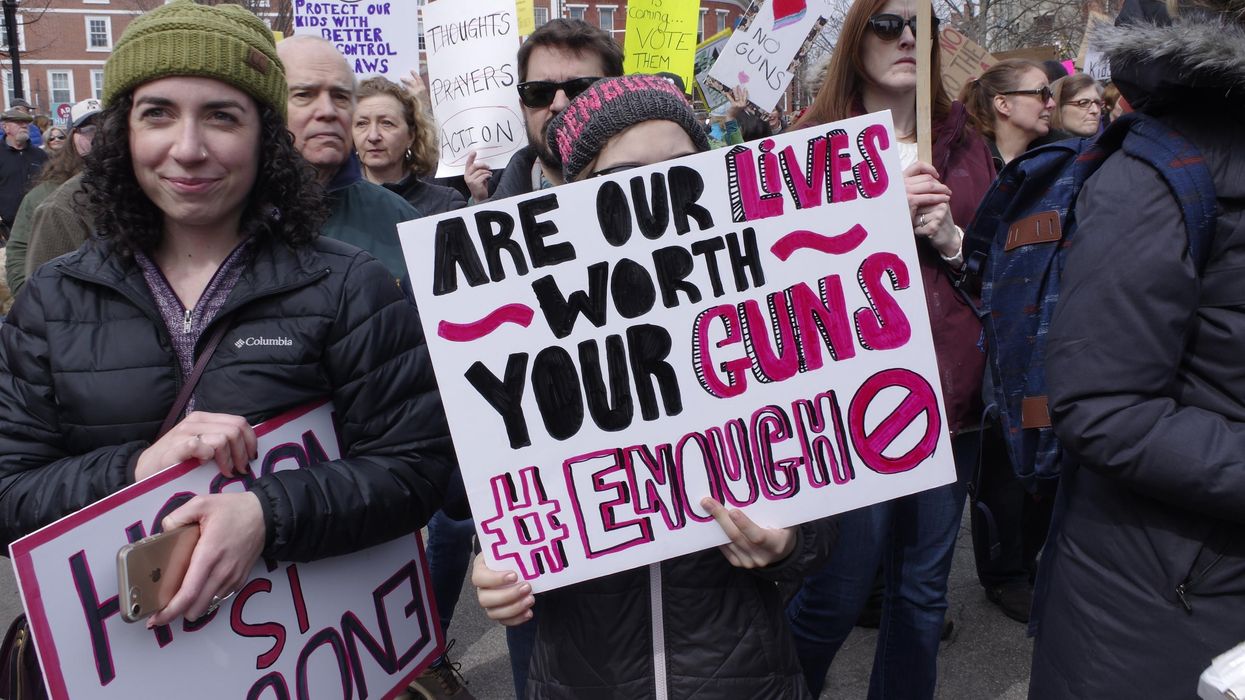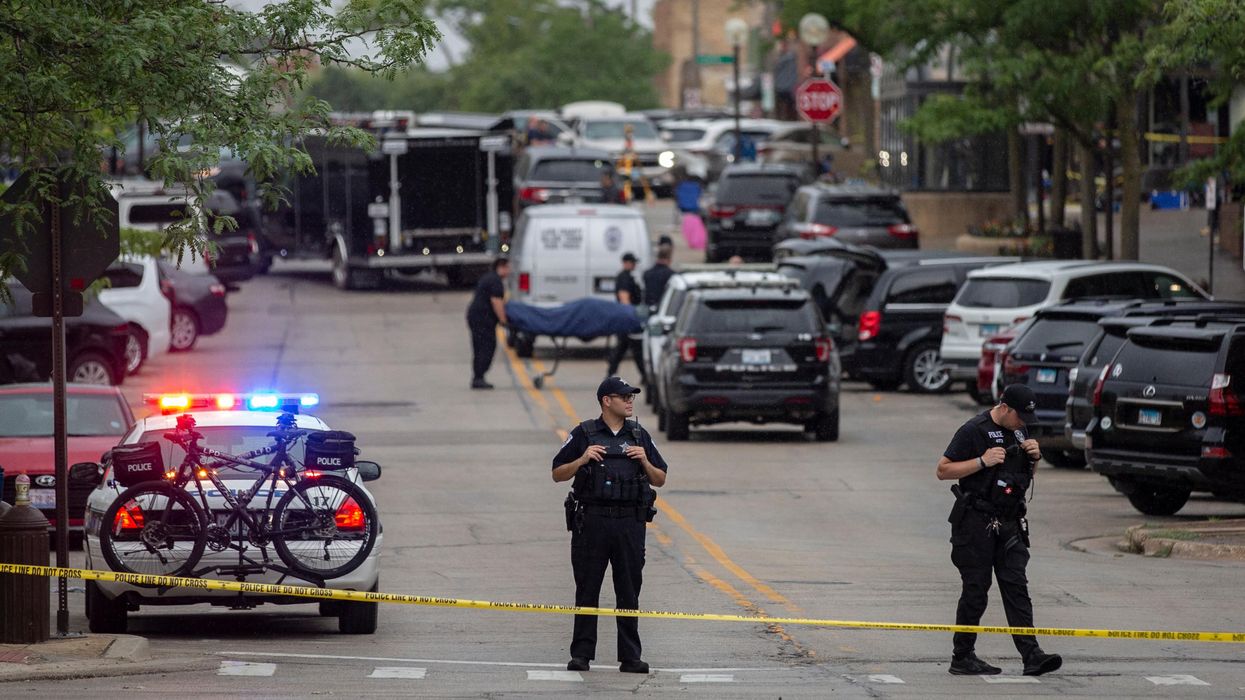Still Marching: 25 Years After the Million Mom March
We didn’t march 25-years ago because we wanted to. We marched because we had to—children were dying. They still are.
I’d never seen anything like it: a mother standing quietly in the crowd, wearing a plain white T-shirt with a large photo of a young boy flashing a wide grin, a missing front tooth, and a superhero logo across his chest. Below the picture, in simple black letters, “Darius Carter 1993-1999 Forever Six.”
She was living my worst nightmare, her beautiful six-year-old son had been shot and killed. And there she was, surrounded by thousands of other moms wearing similar shirts, refusing to let her son be forgotten.
We were just feet from the massive, bright pink-and-white Million Mom March stage on the National Mall in Washington, D.C., listening to speakers demand Congress pass common sense gun laws. It was Mother’s Day 2000—25 years ago.
Darius’ mom and I stood among 750,000 parents, grandparents, and children holding signs, wearing Million Mom March shirts, and carrying photos of loved ones lost to gun violence. Across the country, hundreds of sister marches rose up in solidarity. For many, like me, it was our first protest.
Twenty-five years ago, we marched because we believed a safer world was possible.
But the Million Mom March was more than a protest. It was a collective outcry—stitched together by grief, fueled by hope, and driven by one belief: no child should die by gun violence. With Congress failing to act, mothers across the country rose up— angry, determined, demanding change.
I never imagined I would become an activist. But on April 20, 1999, I sat frozen in front of my TV, heart pounding, as the unthinkable unfolded at Columbine High School—my alma mater. My basketball coach, Dave Sanders, was killed along with twelve students.
Something inside me broke.
I went from a stay-at-home mom with a six- and two-year-old, juggling diapers, nap schedules, and tantrums, to a gun control activist with a new sense of purpose. The following year I organized and led a delegation from Oregon to the D.C. march.
The Million Mom March was a tipping point. It sparked national conversations about gun laws and helped launch a lasting movement—it later merged with the Brady Campaign, amplifying the call for reform. The march also introduced life-saving initiatives like the ASK (Asking Saves Kids) campaign, which urges parents to ask one critical question before their child visits a friend’s home: Is there an unlocked gun in the house? It’s a simple question that can prevent tragedy. Each year, unintentional shootings injure or kill an average of 363 children in the U.S.
In the 25-years since, the movement—propelled by that day on the National Mall—has helped reshaped the fight for gun safety in America. It ignited one of the first large-scale grassroots campaigns, led to the formation of Brady Campaign chapters, and paved the way for groups like Moms Demand Action. It also spurred a wave of state-level reforms: dozens of states passed child access prevention laws, expanded background checks, and enacted red flag laws—one of our most promising tools for temporarily removing firearms from individuals who pose a danger to themselves or others.
Despite the progress, the crisis has grown worse. In 2000, about 28,000 people died from gun-related injuries in the U.S.—a staggering number. Today, it’s soared to over 48,000 per year—132 lives taken every day. Gun violence is now the leading cause of death for children and teens in America, surpassing car crashes, drownings, and cancer.
So what happened? Political courage withered and the gun lobby adapted.
They pushed through PLCCA, granting themselves sweeping immunity from lawsuits. They blocked federal funding for gun violence research. And in 2008, they won a Supreme Court ruling that redefined the Second Amendment as an individual right and struck down local gun safety laws.
The COVID-19 pandemic certainly didn’t help. It created a perfect storm: fear, isolation, distrust of government, and economic insecurity, all of which led to record-breaking gun sales. Millions of first-time gun buyers flooded the market, many without proper safety training. The gun industry profited from the fear, and communities are still paying the price.
Meanwhile, untraceable ghost guns flooded our communities, and leaders in many states chose to weaken gun laws rather than strengthen them. The gun industry seized the moment, expanding its appeal.
Twenty-five years ago, the typical gun buyer was a middle-aged man, and gun ownership was in decline. Today, the industry aggressively markets to women, young adults, and even parents—selling pink pistols to moms and tactical diaper bags to dads—casting gun ownership as a form of family empowerment. As sales rose, so did deaths.
So what now? We march again—in new ways, in new places, with the same resolve.
First, we confront the gun industry’s false promises to women and families. Marketing isn’t the problem; it’s the deadly narrative that owning a gun makes your home safer. It simply doesn’t. Research shows that a gun in the home increases the risk of homicide by 100%, suicide by 50%, and unintentional death significantly. I’ve witnessed how quickly an unsecured gun can turn a moment of fear, anger, or despair into an irreversible tragedy.
Second, we shift the national conversation from gun rights to gun responsibilities. Rights come with duties. An unsecured gun doesn’t just put your family at risk—it endangers neighbors, classmates, and entire communities. Only about 6% of guns used in crimes are stolen, yet those guns are far more likely to be used in violent crimes. And nearly 74% of school shooters under 18 got their gun from home or a relative. These aren’t just tragedies, they’re preventable. Responsible gun owners lock up their firearms, store ammunition separately, and support common-sense policies like mandatory reporting of lost or stolen guns, child access prevention laws, and required training. Supporting background checks and red flag laws isn’t anti-gun, it’s pro-responsibility.
Third, gun violence groups must work together.
In 2000, there was one widely recognized national organization: the Brady Campaign. Today there are many, but they often compete for funding, attention, and influence. It’s time to align, collaborate, and focus our collective energy against a fractured gun lobby whose primary strategy remains fear and bravado. Only by working together can we create sustained lasting change.
Finally, we must elevate and invest in the next generation of activists. Today’s young people have grown up with lockdowns and active shooter drills. They understand the stakes—viscerally. Their leadership was undeniable after the 2018 Parkland shooting, when survivors organized March for Our Lives, one of the largest single-day protests in U.S. history. Those of us who marched in 2000 must now step up and mentor, resource, and amplify this rising generation. Our kids’ lives depend on it.
Twenty-five years ago, we marched because we believed a safer world was possible. I often think of Carole Price, who bravely stood on stage that day and told us about her 13-year-old son, John—shot and killed while playing at a friend’s house. “It never occurred to me to ask about guns,” she said. “I wish I had asked the question.” Then she said something I’ll never forget: “It might be uncomfortable to ask the question. But I can tell you from personal experience, it’s a lot more uncomfortable to pick out a casket for your child.”
Even now—despite the setbacks, the rising death toll, and the political paralysis—I still believe. I believe in this next generation, in the power of parents and survivors, and in ordinary people who refuse to look away. We didn’t march 25-years ago because we wanted to. We marched because we had to—children were dying. They still are.
So we keep going. Because really, what other choice do we have?


